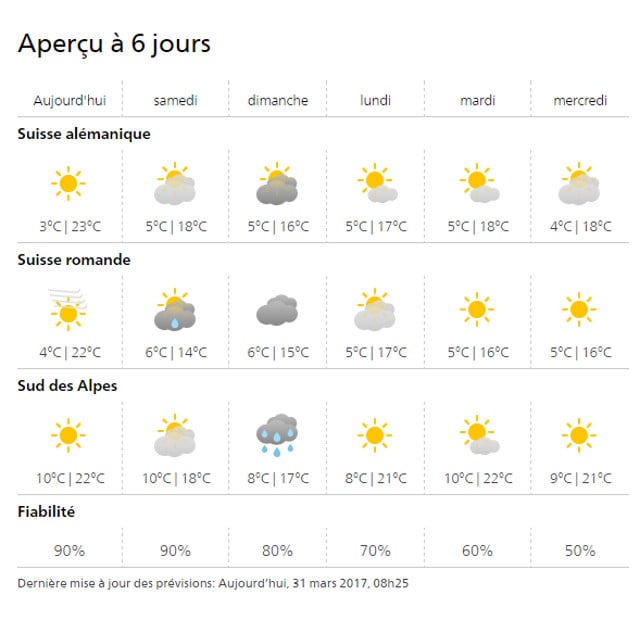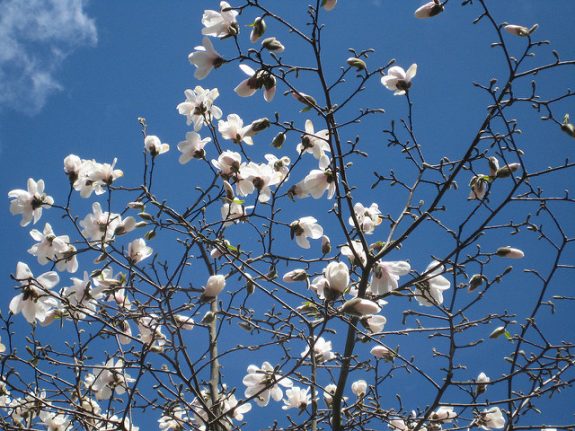
WEATHER
This March in Switzerland was second warmest on record
Switzerland has experienced its second warmest March since records began in 1864, with an average temperature across the country of 3.9 degrees, according to the Swiss meteorological office.
Published: 31 March 2017 09:08 CEST

File photo: Roban Kramer
Only March 1994 surpassed that figure, with an average of 4.3 degrees, said MeteoSuisse.
In the last few decades the ‘norm’ for this time of year has increased by one degree, said the weather office, from -0.3C during the 1960s and 70s to 0.7C in the period 1981-2010.
That means the average temperature across Switzerland this March surpassed the current norm by more than three degrees.
And in some places it was the warmest March ever, notably in watchmaking town La Chaux-de-Fonds in the Jura, which surpassed the norm by 4.2 degrees.
The temperatures were boosted by a strong foehn wind at several points during the month which on March 20th helped temperatures in the southern Swiss canton of Ticino to 25.2 degrees, giving the region its first ‘summer’ day.
Lately, anticyclone conditions have brought warm and sunny weather with temperatures on the Swiss lowlands reaching 20 degrees.
The warm weather has provoked the early flowering of many plants, said the weather office, with some blooming around a fortnight earlier than the norm.
The mild temperatures are expected to continue into next week.

Source: MeteoSuisse
Url copied to clipboard!



 Please whitelist us to continue reading.
Please whitelist us to continue reading.
Member comments